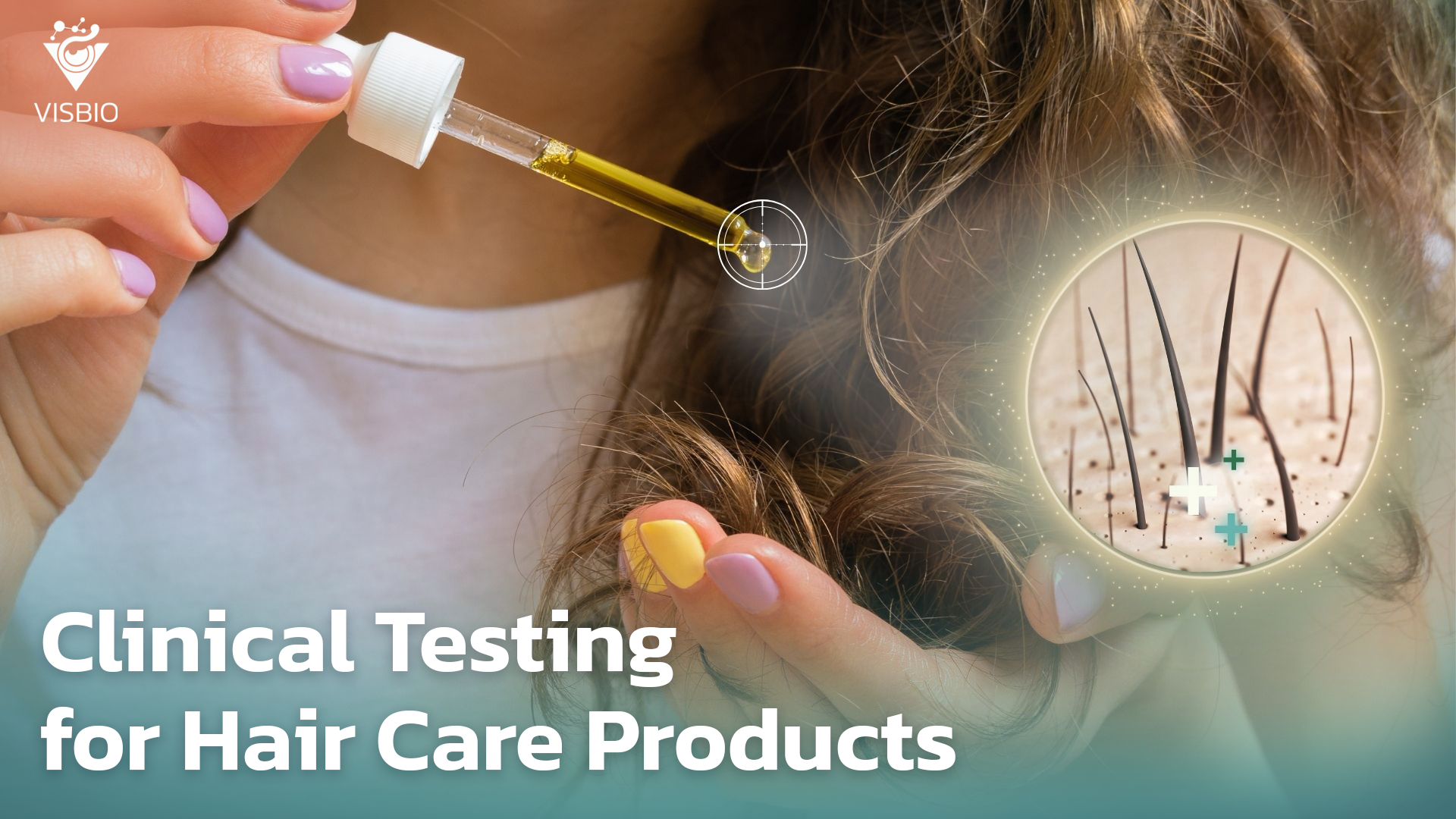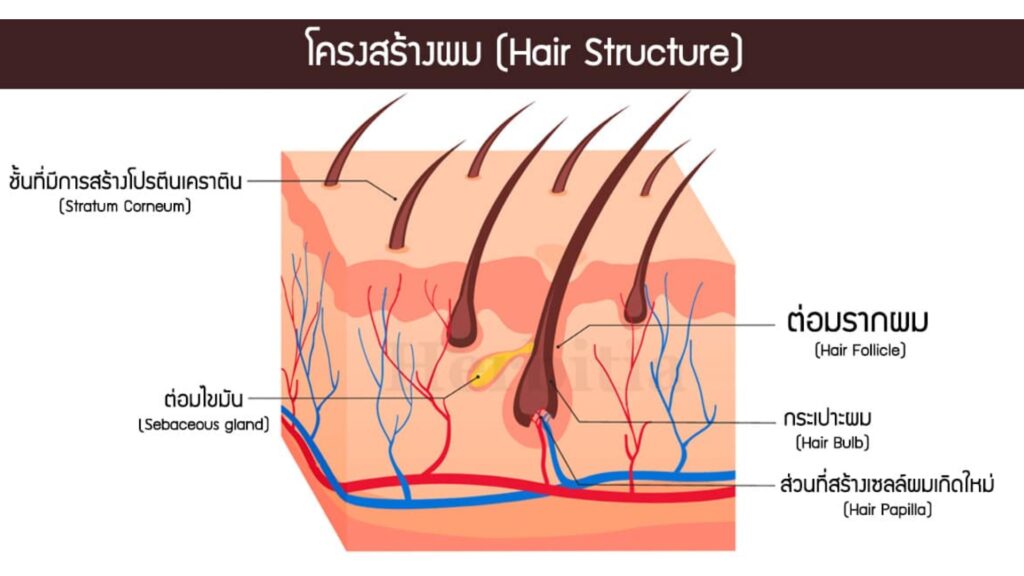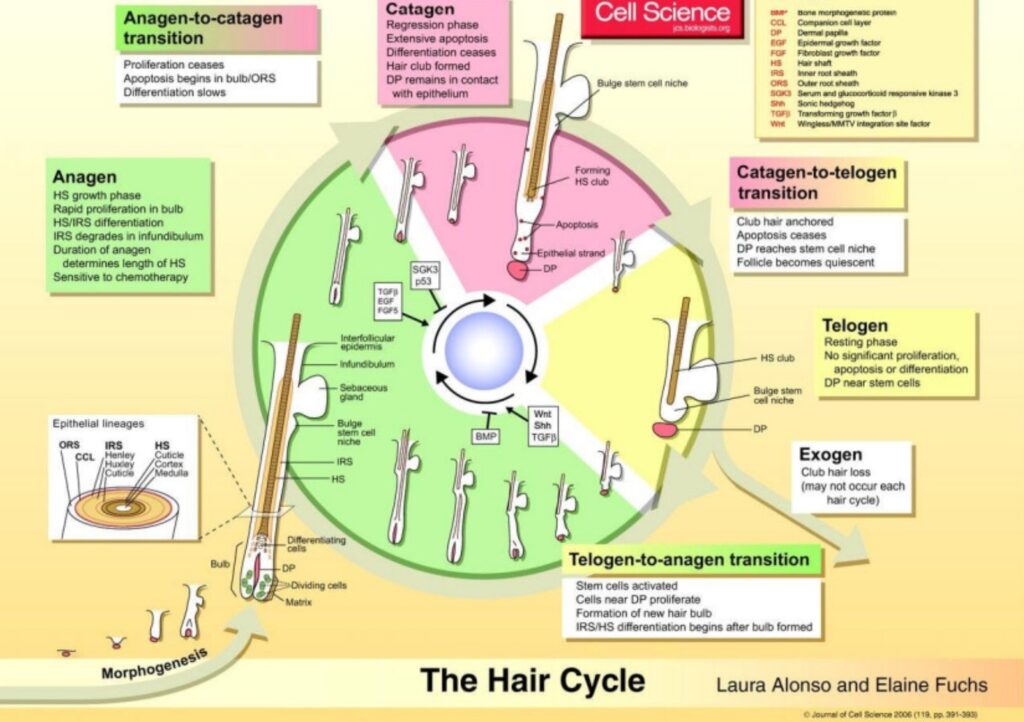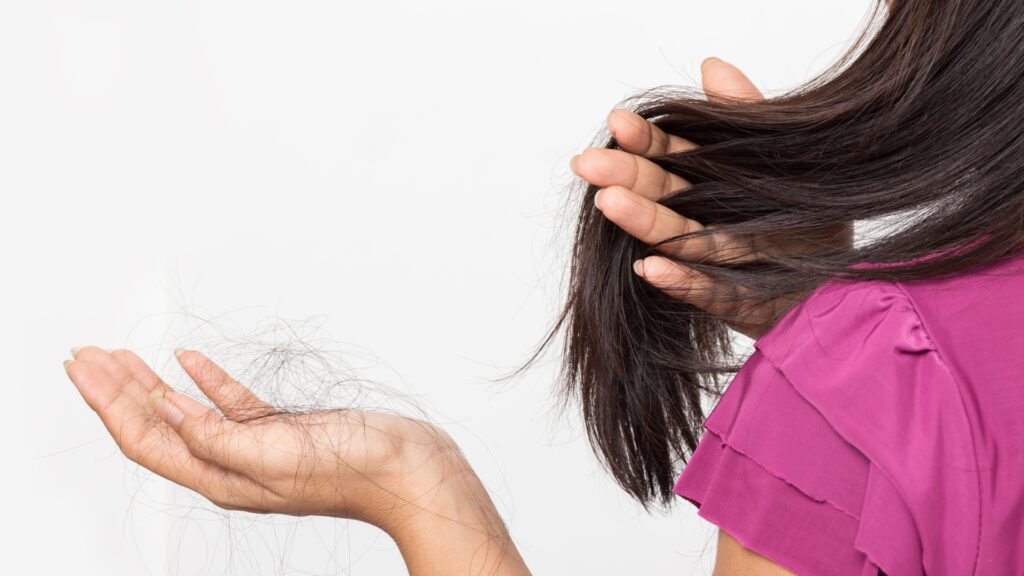
Information on Clinical Testing Services for Hair Care Products
The widespread issue of hair loss among both men and women. Natural hair shedding is around 25-100 strands per day, but anything beyond this could indicate a problem. Causes of hair loss vary, including genetics, stress, aging, hormones, or side effects of medication. Consequently, the market offers various hair care products like shampoos, serums, and hair conditioners. VISBIO offers clinical testing services for these products, focusing on their effectiveness in reducing hair loss and promoting hair growth. The tests are conducted on volunteers experiencing hair problems, specifically androgenic alopecia.
Hair Structure and Growth Cycle
The hair as part of the epidermis, primarily composed of sulfur-rich keratin created by hair matrix cells. Hair types include Vellus hair (fine hair on the body and face without medulla, usually colorless) and Terminal hair (thicker, coarser hair found on the scalp, underarms, and pubic area).
The Hair Growth Cycle
Hair Growth Cycle: Divided into 3 phases
- Anagen phase (growing phase): This is the phase where the hair follicle is deeply embedded in the dermis and appears dark due to rich blood supply. This phase lasts about 1,000 days, or around 3 years, and represents the majority of hair (85-90%) on the scalp.
- Catagen phase (transitional phase): In this phase, the hair follicle moves upward and its color starts to fade as it separates from the blood vessels that nourish it. This phase lasts about 10 days, or 2-3 weeks, and very few hairs are found in this stage.
- Telogen phase (resting phase): This is the phase where the hair follicle moves up, sitting just below the sebaceous gland openings, characterized by club hair. The new anagen phase hair replaces and pushes these hairs, leading to shedding. This phase lasts about 100 days, or 3 months.
Causes of Hair Loss
Hair Loss (Alopecia): A condition where hair falls out, which can occur with or without lesions on the scalp and can be either in widespread areas or localized. Hair loss can be temporary or permanent. There are 8 types of causes for hair loss.
- Androgenic Alopecia: The most common cause due to an excess of androgens. Hair loss starts from the frontoparietal scalp and progresses towards the mid-scalp.
- Alopecia Areata: The second most common cause after androgenic alopecia, with unclear origins. It is characterized by patchy hair loss.
- Telogen Effluvium (Thinning Hair): Occurs when certain events trigger the telogen phase of the hair cycle to shed hair faster than usual, such as surgery, stress, or medication. Hair loss occurs about 3 months after these events.
- Anogen Effluvium: Caused by chemical exposure, where chemicals interfere with hair growth.
- Traction Alopecia: Hair loss due to direct contact with hair, such as tight braiding or the use of hot curlers, often seen in people with African descent. It can progress to scarring alopecia.
- Cicatricial Alopecia (Scarring Alopecia): Hair loss due to scarring that destroys the hair follicle.
- Tinea Capitis: Hair loss caused by fungal infection.
- Alopecia Neoplastica: Hair loss due to tumors.
Hair Care Product Definitions and Types
Hair Care Products: Classified under cosmetics, these are substances used to enhance the beauty of the human body and include cleaning products. According to the industrial standards for cosmetics by the Ministry of Industry, hair care products can be categorized as follows:
- Hair Cosmetics: This category includes a variety of products such as shampoos, hair conditioners, curling lotions, hair straightening products, anti-dandruff treatments, hair and fur colorants, hair conditioners, and hairstyling products.
- Aerosol Cosmetics: These are hair care products that contain gas as a component.
Today, the market offers a wide variety of hair care products with different properties. For example, some products are designed to reduce dandruff, prevent hair loss, lessen the appearance of gray hair, or nourish hair to make it shinier. Each product type has its own unique set of ingredients or components.
Testing and evaluating hair care products that focuses on the properties of hair loss.
Testing and Evaluating Hair Loss or the Effectiveness of Hair Care Products. There are two methods:
- Hair Counts:
This method involves counting the number of hairs using computer magnification in a defined area, typically a circle or square of 1 square centimeter or square inch. The chosen area for assessment slightly impacts the accuracy of the results. The target area selected for evaluation contains Terminal hair but avoids the center of bald areas, as they have fewer Terminal hairs.
- Hair Density Assessment:
Hair density is evaluated by the weight of the hair before and after product use. This starts with cutting the hair as close to the scalp as possible in the test area, then applying the product for a period. Later, the hair in that area is cut and weighed. However, this method is less popular because applying products to the hair or scalp might add weight to the hair, potentially leading to inaccurate results. Also, the distance from the scalp when cutting hair before and after the experiment should be consistent, requiring scissors with a cutting guide to maintain equal hair length each time.
Details of clinical testing services for hair products.
VISBIO Co., Ltd. offers detailed services for testing, evaluating, and comparing the enhancement of hair growth and the prevention of hair loss. This involves testing the effectiveness of hair care products on 25 healthy Asian volunteers. The process includes:
- Digital Imaging: For assessing hair density, utilizing Dino-Lite Digital microscopes. The hair count and density are evaluated on the photographs by trained experts.
- Pre and Post-Product Application Imaging: Photos are taken before and after product use for assessment purposes.
- Self-Assessment Questionnaires: Volunteers are asked to complete questionnaires to provide their self-evaluation of the products.
These testing services are vital for determining the efficacy of hair care products, ensuring they meet the desired standards and fulfill consumer expectations in the health and beauty industry.
Literature:
- ศ. สมยศ จาริจิตรรัตนา, ผู้ป่วยโรคผมร่วงและผมบาง, หน่วยโรคผิวหนัง ภาควิชาอายุรศาสตร์
- ธนวรรธน์ วิวัฒนมงคลกุล, ดิษย์ชิต ประยูรพีรพุฒิ และ ธีรเมธ กัลป์ยาวัฒนเจริญ, 2561,
- การพัฒนาผลิตภัณฑ์บำรุงเส้นผมและป้องกันผมหงอกจากสารสกัดใบฝรั่ง, คณะเภสัชศาสตร์มหาวิทยาลัยบูรพา.
- พันธ์ทิพย์ อนุสรศักดิ์, 2566, แผนธุรกิจ ผลิตภัณฑ์แชมพู สําหรับผมทําสียี่ห้อ โคลี่, วิทยาลัยการจัดการ มหาวิทยาลัยมหิดล.
- ช่อทิพย์ ตันทา, 2559, การออกแบบบรรจุภัณฑ์สำหรับผลิตภัณฑ์ดูแลเส้นผมโดยใช้หลักการออกแบบเพื่อมวลชน, คณะสถาปัตยกรรมศาสตร์มหาวิทยาลัยนเรศวร.





